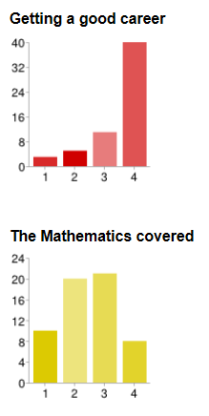There are many excellent resource sites out there with inspirational teachers making great resources. However, when it comes down to it, there are only a handful of websites I check on a very regular basis. To make it to this list, I am generally looking for tasks that:
- Are ‘low floor/high ceiling‘ giving access and challenging everyone at their own level
- Have multiple approaches, giving students room for creativity
- Are challenging and hence interesting
- Will give me permission to teach skills
- Make skill practice, more interesting
- Have a story for students to follow
There are many activities out there that fit these descriptions, but there is only so much time in the week. During breaks I have more time to explore but these are the sites that I can check quickly with high yield for your classroom (in no particular order):
1. Mathematics Assessment Project – A website produced from a partnership with the Shell Centre (University of Nottingham, UK) and the University of California at Berkley. Here you will find tasks that will help the common core standards come alive in your classroom. Full of rich activities that encourage discussion and investigation.
2. Standards Unit – This has been around for a while but is still one of the first publications I look at and is close to my picture of what mathematics education should like. A rich, dense set of activities that will give you great ways to work on various skills and topics.
3. YouCubed – A relatively new site that has come out of Prof. Jo Boaler’s (Stanford) efforts to encourage the ‘growth mindset’ in the classroom. I am interested in anything that comes from the idea that anyone can be good at math.
4. Open Middle – I came across this site relatively recently and am sad that I didn’t find out about it sooner. it’s tag-line is: ‘Challenging Math Problems Worth Solving’ and tips the proverbial hat to the school of thought that says that you don’t need to have tenuous links to real world problems in order to get buy-in from students. It appeals to the problem solver in all of us.
5. Emergent Math – With its routes in Problem Based Learning (PBL), emergent math is useful not only for those who want to tear up the textbook and start again with an integrated curriculum, but also for people who just want great projects that they can slot into their established curriculum. Lots of links to sites not mentioned here so worth a look.
6. Mr. Barton Maths – Lots of great resources and activities that will make your classroom a more interesting place. Enough said.
7. Tarsia – Sometimes students just need to practice. There I just said it. But using Tarsia you can avoid ‘death by worksheet’ and get students to practice without really realizing it. It also great for discussion and you can tell very quickly if students have answered everything correctly or not. For more, see Why I Love Tarsia.
8. NRich – Great site for ‘low floor/high ceiling’ problems that will challenge anyone in your classroom. Students may like to explore this outside the classroom, too. Sortable by topic and I believe they are coming out with a common core curriculum map, quite soon.
9. Dan Meyer 3 Acts Spreadsheet – Act 1 – You show a video or picture prompting discussion, prediction and estimation as well as the all important step of coming up with the variables that are to be investigated. Act 2 – Students get the information they need to solve the problem. Act 3 – Once students have solved the problem in various ways and presented you show them the solution. There is a lot more to it than this and to pull these lessons off well is a true art form. But the only way to get better at these is to try them. So try them! More info here.
10. Mathalicious – Math lessons based on the real world problems. $185 for 12 months subscription (I think currently they are also doing pay-what you can) but well worth it. Excellent for creating the need for the math you teach.
It takes me around 90 minutes to trawl through these websites at the beginning of a unit but is well worth it when it comes to lesson planning and I know half of the activities I am going to do already. As with any of these activities they will need to be (and should be) adapted for your classes and situation but they provide an excellent starting point from which to plan.
What websites are a must-check when you are planning a unit? Leave a comment, below.













